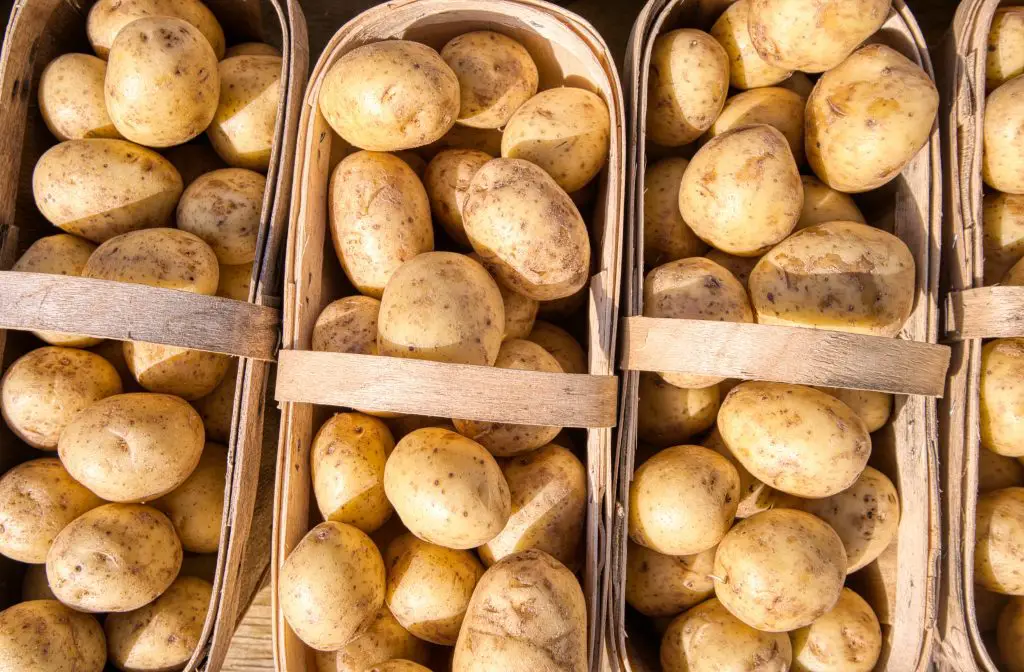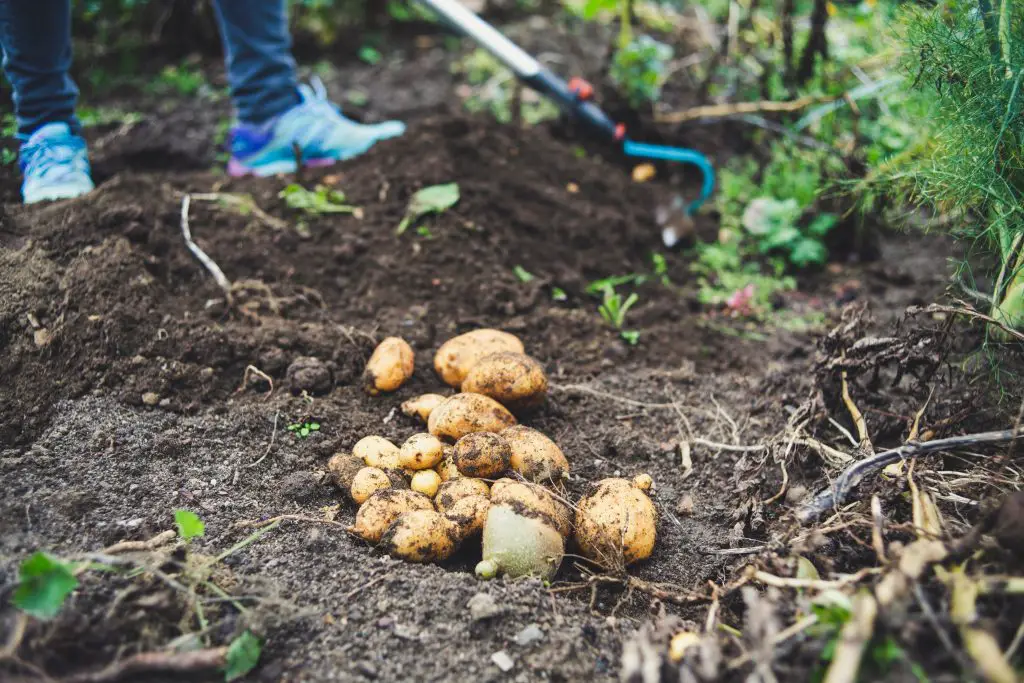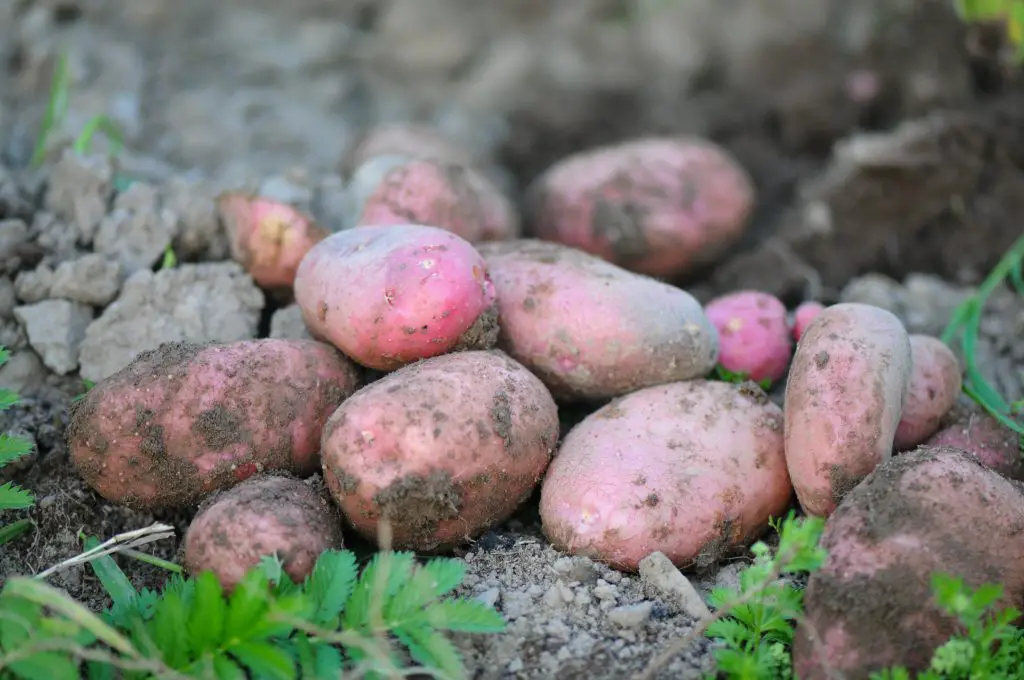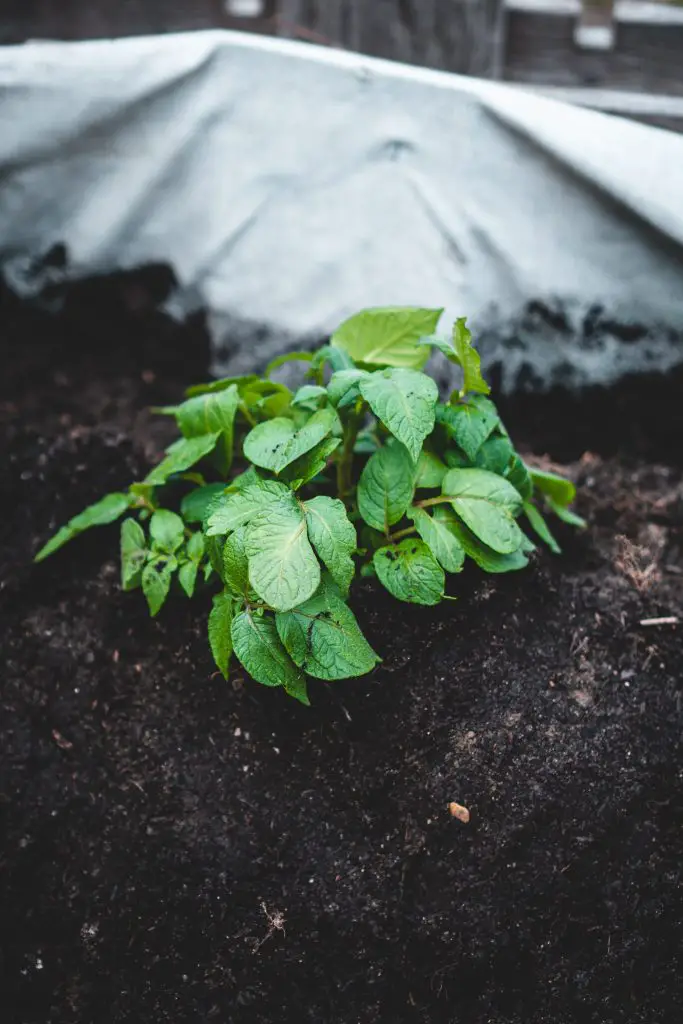Can You Eat Seed Potatoes? Most people that grow potatoes at home will usually go to the garden center to purchase seed potatoes to grow the crop every year. However, one of the questions that does pop up from time to time is can you actually eat the seed potatoes instead of planting them?
Seed potatoes are ordinary potatoes like anything else and therefore can be eaten just like any other potato. The only difference between certified seed potatoes and regular ones that you purchase at the supermarket is that they have been tested for a range of possible diseases which can cause problems in your garden.
This is the main reason why these plants cost a little bit more, however, if you want to avoid problems in your garden they are usually worth purchasing but they are generally more expensive than regular potatoes so I wouldn’t recommend eating them.

Can You Use Regular Potatoes As Seed Potatoes?
You may also be wondering if seed potatoes are basically the same thing as regular potatoes can you actually use them to grow a crop of potatoes in your backyard. The answer to this is yes you can plant potatoes into your garden and they will grow.
This begs the obvious question is why would you even consider purchasing seed potatoes. The reason for this is simply that it provides a level of protection against disease in your garden because once you have diseases in your soil they are difficult to eradicate and can affect several generations of crops.
However, this is most likely to occur when you have potatoes planted in the same place every year which is what many commercial growers do. If you alternate the position of the potatoes within your garden the chances of having problems is reduced significantly though it is not completely eliminated.
So if you want to grow potatoes at home and you’re a little bit nervous about putting them into your garden then you can also use grow bags to experiment with doing this as this will ensure that the soil used to grow the potatoes remains separated from the rest of the garden.

Can You Use Your Own Home Grown Potatoes As Seed Potatoes?
As mentioned above seed potatoes are in practice no different from regular potatoes so the answer to this question is yes you can replant your potatoes year on year. However, if you’re going to do this is important to ensure that you select high-quality potatoes that have limited blemishes and do not have any issues with disease.
How Much Will Each Seed Potato Produce?
The amount that each seed potato will produce is highly dependent upon whether the plant is grown in grow bags or in the garden. Additionally, things such as whether you earth up potatoes and also the timing of the harvest will also affect the volume of potatoes that you get.
However, as a general rule, each seed potato will typically produce around 4lbs of potatoes when planted in the garden. In grow bags the potato crop is considerably less and typically will be around 1lb per seed potato that is planted but this can of vary a little bit depending upon the specific variety that is planted, to read more about this click here.

Can You Cut Seed Potatoes In Half And Does That Affect The Yield?
Seed potatoes can be cut in half or even quarters and they will grow quite successfully in the garden provided that there is sufficient size associated with the original tuber. In an experiment that we conducted in our trial garden, we found that cutting potatoes in half actually increased the yield per seed potato planted a little bit.
However, cutting the potatoes in half also significantly increased the size of the crop that was produced per packet of seed potatoes purchased.
How To Maximise The Yield Of Potatoes Produced?
The yield of the potatoes crop can be increased by almost 50% if you follow a few simple steps that will ensure a bumper crop.
The first tip that we recommend is to plant the seed potatoes in a relatively deep Trench, A depth of approximately 1 ft is recommended. The increased depth of planting is beneficial in producing a higher yield because the potato crop is generally produced above where the seed potato is planted in the group. So having additional depth to the planting will encourage more potatoes to be produced.
The second recommendation is to not completely fill the trench when you are back-filling over the seed potatoes, just put a thin layer of soil on top of the seed potatoes. The reason for this is that we want to encourage the seed potatoes to produce large amounts of foliage which will help the development of the tubers because there is a greater degree of photosynthesis occurring.
The thin layer of soil will allow the plant to more quickly reach the light and begin photosynthesizing for a longer period creating a greater number of tubers.

The third recommendation that we suggest is to continually backfill the trench as the plants develop so that you are progressively covering up foliage as it develops as this will encourage additional tubers to be created. This process can continue throughout the season until you end up with the potatoes being grown in little hills.
This process has been shown to increase the number of potatoes but also improve their quality as it ensures that the tubers are not exposed to light which will turn them green and poisonous. To read more about this click here.
The final recommendation that we have is to harvest the potatoes progressively throughout the season as you need them. The reason this is beneficial is that if you only harvest one or two plants at a time the other plants will continue to produce tubers throughout the season increasing the size of the yield that you get.
I hope you found this article useful and you have great success growing your potato crop at home. If you have any additional questions or comments please leave them in the section below.
Relevant Articles
Can You Compost Potatoes? Or Will They Start Growing?
How Late Can You Plant Potatoes? (And How To Maximize The Yield)
How Much Sun Do Potatoes Need? Does The Yield Fall In Shade?
Does Earthing Up Potatoes Improve Yield? Is It Worth Doing?
